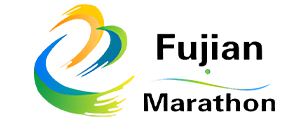Maximizing Efficiency: Optimization Techniques for Three-Phase Induction Motors
Introduction
Three-phase induction motors are ubiquitous in various industrial and commercial applications, powering everything from pumps and fans to conveyor belts and compressors. As energy efficiency becomes increasingly important for reducing operational costs and minimizing environmental impact, optimizing the efficiency of these motors has become a focal point for engineers and manufacturers alike.
Factors affecting efficiency
Efficiency in three-phase induction motors is influenced by a myriad of factors. Design parameters such as motor size, winding configuration, and core materials play a crucial role in determining efficiency. Additionally, load conditions and the operating environment, including temperature, humidity, and altitude, can impact motor performance. Furthermore, understanding and mitigating losses, including copper losses, iron losses, and mechanical losses, are essential for maximizing efficiency.
Measurement and Standards
Efficiency measurement techniques, both direct and indirect, are utilized to assess the performance of induction motors accurately. International standards and regulations, such as those established by organizations like the National Electrical Manufacturers Association (NEMA) and the International Electrotechnical Commission (IEC), provide guidelines for motor efficiency ratings and labeling requirements.
Efficiency Optimization Techniques
Several techniques can be employed to optimize the efficiency of three-phase induction motors. Selecting the appropriate motor size for the application ensures that the motor operates near its peak efficiency point under typical load conditions. Optimizing winding design, such as using high-conductivity materials and minimizing resistance, can reduce copper losses and improve efficiency. Advanced control algorithms, including field-oriented control (FOC) and vector control, enable precise control of motor speed and torque, further enhancing efficiency. Additionally, the integration of variable-frequency drives (VFDs) and soft starters allows for smooth starting and variable-speed operation, reducing energy consumption and mechanical stress on the motor.

Comparative Analysis
When comparing three-phase induction motors with other motor types such as synchronous motors, permanent magnet motors, and DC motors, it becomes evident that each type has its own set of advantages and limitations. While synchronous motors offer higher efficiency at rated loads and power factors, they require additional control systems and are less forgiving of load variations compared to induction motors. Permanent magnet motors, on the other hand, offer high efficiency and power density but may be cost-prohibitive for certain applications. DC motors excel in applications requiring precise speed control and rapid acceleration but may require additional maintenance due to the presence of brushes and commutators.
Applications and Case Studies
Three-phase induction motors find applications across various industries, including manufacturing, agriculture, transportation, and HVAC systems. Case studies highlighting successful implementations of energy-efficient motor systems demonstrate the tangible benefits of efficiency optimization, including reduced energy consumption, lower operating costs, and enhanced system reliability.
Emerging trends and technologies
The integration of Internet of Things (IoT) sensors for condition monitoring enables proactive maintenance strategies, preventing costly downtime and extending motor lifespans. Advanced materials such as high-efficiency copper alloys and lightweight composite materials offer opportunities for further improving motor efficiency and performance. Predictive maintenance algorithms leverage machine learning and data analytics to identify potential issues before they escalate, maximizing uptime and productivity. Moreover, the increasing adoption of electric vehicles and renewable energy sources underscores the importance of efficient motor systems for achieving sustainability goals.
Challenges and Future Directions
Despite advancements in motor technology, challenges remain in achieving optimal efficiency in three-phase induction motors. Cost considerations, retrofitting existing systems, and balancing competing performance requirements pose significant hurdles for manufacturers and end-users alike. However, ongoing research and development efforts focused on enhancing motor efficiency, reliability, and sustainability offer promising avenues for addressing these challenges and driving innovation in the field.
Conclusion
Efficiency optimization techniques for three-phase induction motors are essential for improving energy efficiency, reducing operating costs, and achieving sustainability objectives. By understanding the factors influencing motor efficiency, implementing advanced control strategies, and leveraging emerging technologies, engineers and manufacturers can maximize the performance and longevity of induction motor systems, contributing to a more sustainable future.


